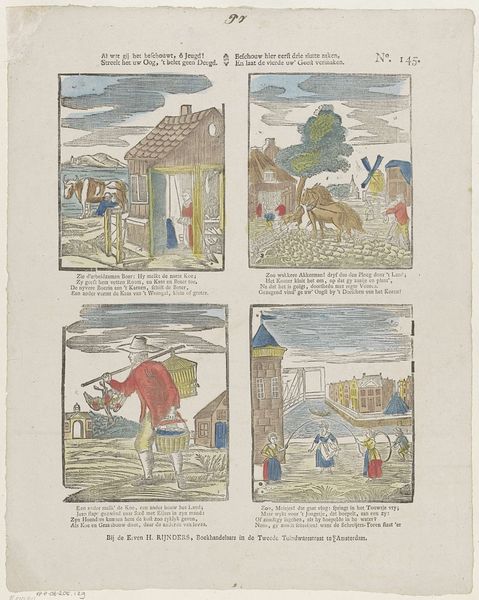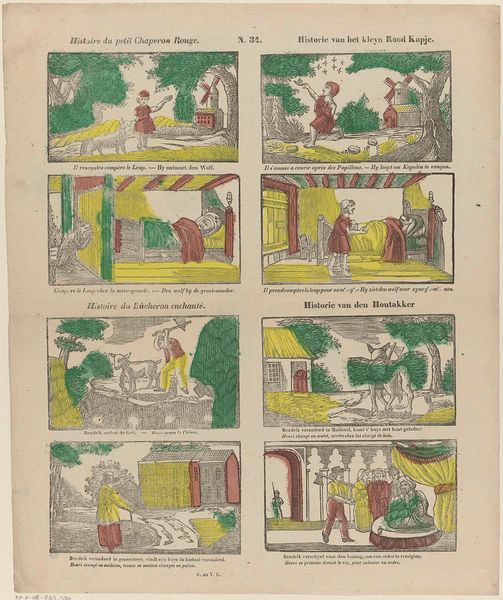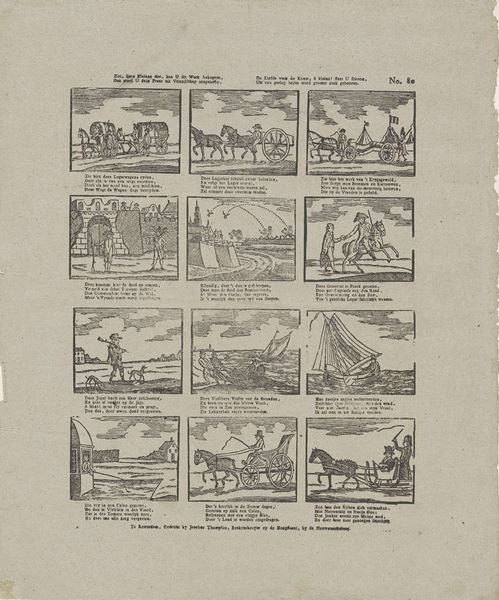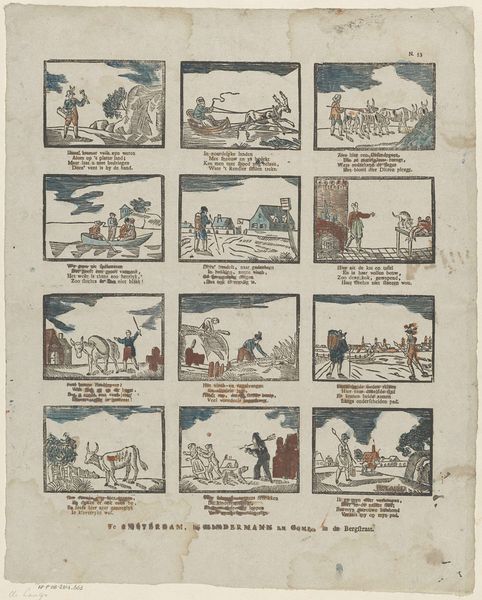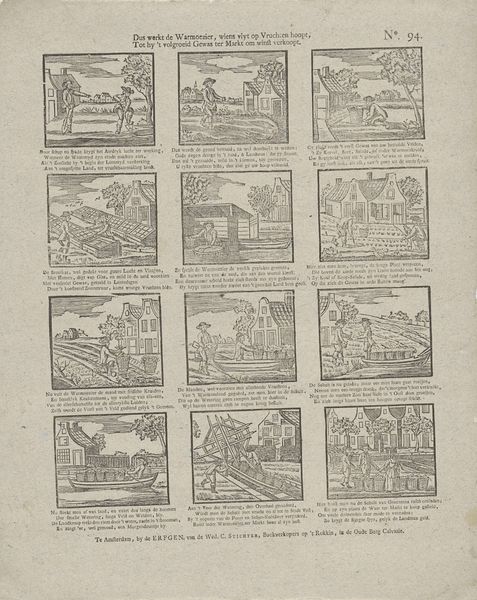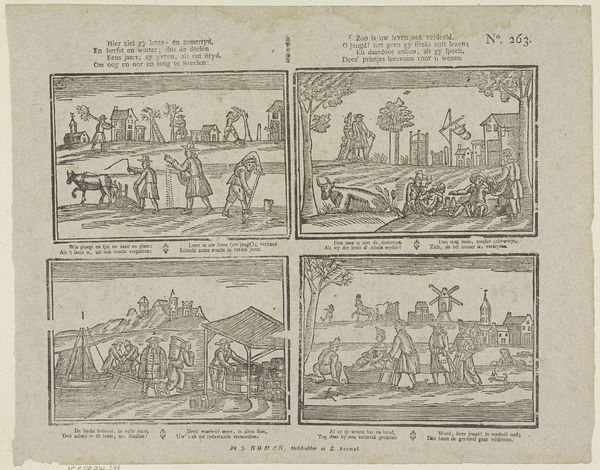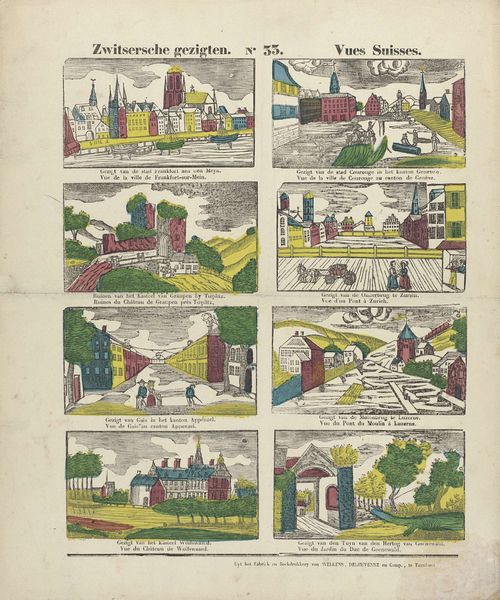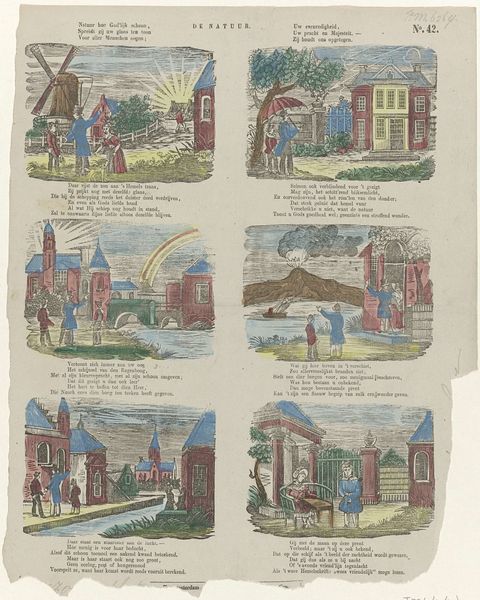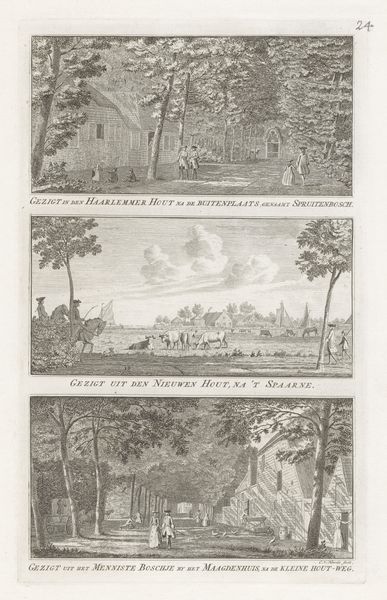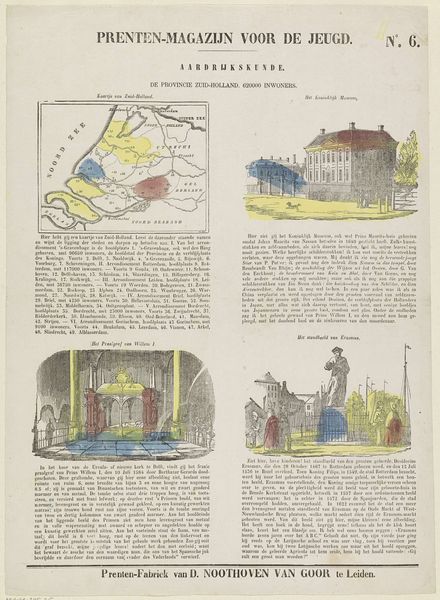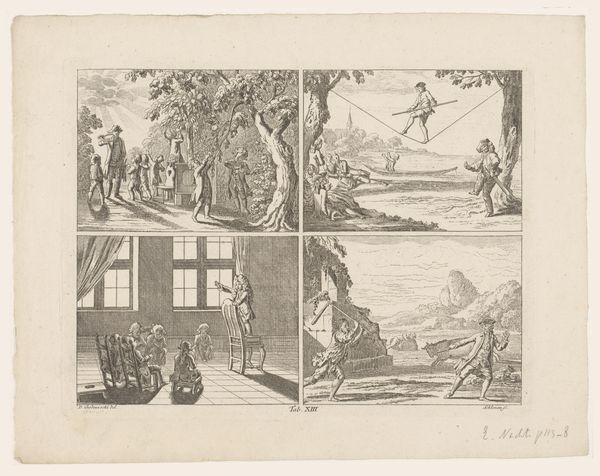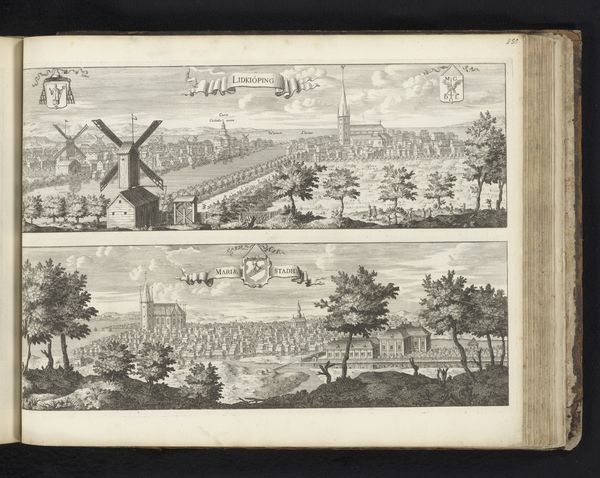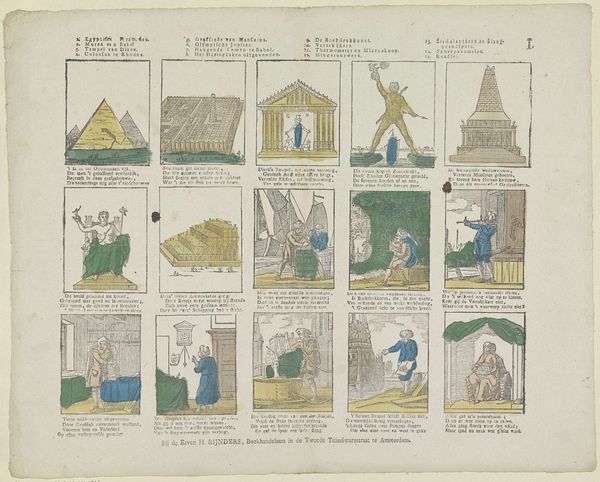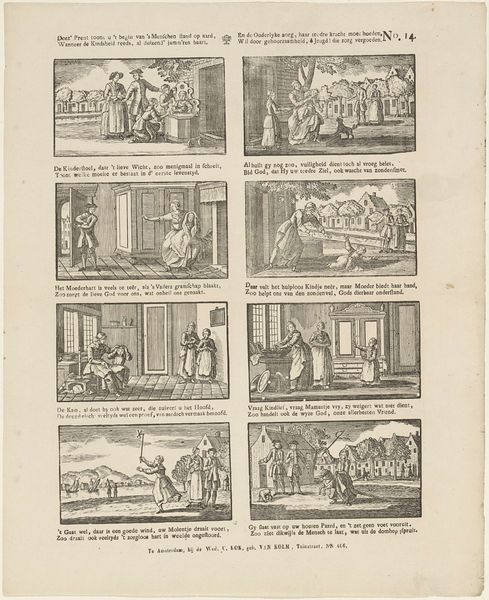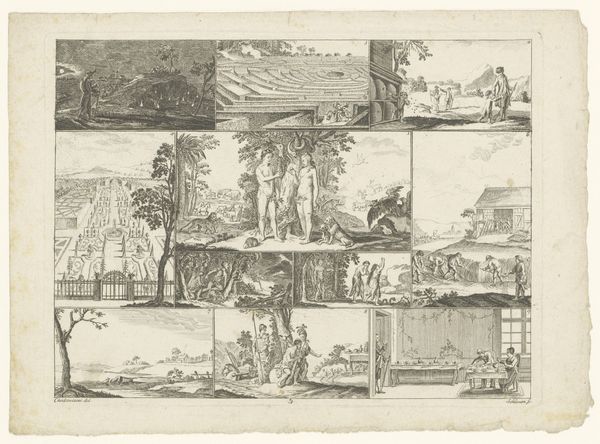
# print
#
pen illustration
#
landscape
#
genre-painting
Dimensions: height 339 mm, width 423 mm
Copyright: Rijks Museum: Open Domain
Curator: This is an intriguing 19th-century print titled "De viergetyden des jaars," or "The Four Seasons of the Year," created sometime between 1831 and 1854. It comes from the workshop of Erve H. Rynders and is currently housed here at the Rijksmuseum. Editor: My first thought is how orderly and compartmentalized it appears, four distinct boxes, each a world unto itself but collectively presenting a familiar cycle. The colours are vibrant, almost toy-like in their simplicity. Curator: Indeed, this piece speaks volumes about societal structures and perceptions of time during that period. Each scene depicts a traditional seasonal activity – ploughing in spring, harvesting in autumn. But observe who is absent; this is a distinctly agrarian vision of Dutch life. What narrative is formed through the labor depicted here? Editor: I am struck by how archetypal each scene is; Spring contains the archetype of new beginnings and agricultural preparation. Summer, leisure, but with working livestock. Then comes Autumn, the season of harvest and gathering of food, leading into winter, whose symbols feature playfulness but reveal risks with its imagery of frozen water. These visual shortcuts helped establish familiarity and convey meaning rapidly. I notice that despite differences of setting, there are people wearing similar types of red cloth that reoccur. Do these recurrences play an important function for cultural memory or identity? Curator: Those observations lead us to contemplate its original purpose and target audience. Likely produced for mass consumption, such prints were accessible to a broad demographic, communicating ideas about labor, social order, and perhaps even a touch of national identity through the consistent landscape motifs. The clothing you note may have represented markers of common values within these groups, but they may also emphasize emerging markets in fabric dye production and consumer behaviors among different classes in Dutch society at the time. Editor: Thinking about it from a symbolic point of view, these scenes offer comforting visual rhymes—recurring motifs of figures crossing a bridge, perhaps speaking to transience and cycles. It all conveys a deeply ingrained sense of place. Curator: This has been really insightful for thinking about intersections in identity and the world of "De viergetyden des jaars". Editor: A closer look into Rynders "The Four Seasons of the Year," encourages reflections about timeless and culture within distinct but united seasonalities.
Comments
No comments
Be the first to comment and join the conversation on the ultimate creative platform.
